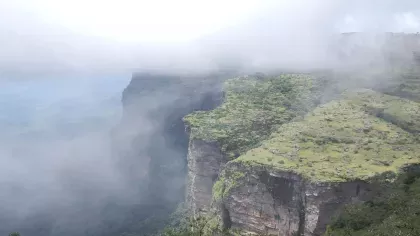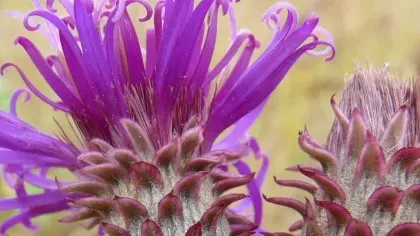16 October 2017
Kew journeys into the wilds of Indonesia
Kew scientist and Head of the Identification and Naming Department, Tim Utteridge, describes a recent trip to Indonesia and work that Kew is doing with the country to record and protect its incredibly rich plant diversity.

Kew's work with Indonesia
Stretching from Sumatra in the west to the island of New Guinea in the east, Royal Botanic Gardens, Kew has been working across Indonesia for many years. Kew scientists are helping to conserve some of the most threatened habitats in the country through Kew’s Tropical Important Plant Areas (TIPAs) project. As a part of this and other projects, we have been developing links with many Indonesian institutions including Universitas Papua in New Guinea and the Indonesian Academy of Science, including the national herbarium (Herbarium Bogoriense) and botanic garden (Kebun Raya Bogor).
Last month, as part of Kew’s Asia Team, I and four other scientists visited Indonesia to develop our collaborations even further and help strengthen the existing expertise within Indonesia itself.
Training in Java
Our first stop was the island of Java, where we delivered a Tropical Plant Identification Workshop to over 22 budding Indonesian scientists. Being able to identify plants is really important when deciding which areas need conserving. With over 40,000 species of plants in Indonesia, the task of identifying plants is not an easy one. Fortunately for us, we run a two week tropical plant identification workshop at Kew every year, so we are well versed in helping students to use plant characters to identify plants.
During our time in Java, we also met with the Director of Herbarium Bogoriense and its Head of Collections to discuss further collaborations. With Kew being one of the world-leading curators of plant collections, we are always keen to share our experiences in databasing and digitisation.
A flight to West Papua over unbroken rainforest
After Java, we flew on to Manokwari, a town in West Papua. The flight took almost a day, and sent us across the Kepala Burung or ‘Bird’s Head Peninsula’ in West Papua. This area of West Papua is still covered with unbroken rainforest as far as the eye can see. It’s an area that Kew has identified as important to conserve, and for us it gave us a sense of real optimism that this can still be achieved. Kew is working with the new West Papua Provincial Government as they look to develop the Province into Indonesia’s first ‘Conservation Province’.
Meetings in Manokwari
In Manokwari, we met key stakeholders in the Provincial Government including Prof. Charlie Heatubun, Head of Research and Development for the Province, and Yance de Fretes, West Papua Senior Landscape Program Manager at Conservation International. Kew’s other key partner in the Province is the University of Papua and we held meetings with Freddy Pattiselano, Head of its Biodiversity Research Center, to discuss future collaborations and gave a series of talks on a range of topics including New Guinea trees, orchids and herbarium management practices.
Forests, mountains and grasslands
While I stayed in Manokwari to have further discussions with Prof. Heatubun, the rest of the team headed south to Ransiki – previously a day’s travel but now less than a three-hour drive on excellent roads. As part of the TIPAs programme we are looking at suitable sites for vegetation survey and ground truthing, including establishing an accessible plot network across the Province. Several sites were visited including forested hills near Gunung Botak, areas of natural grassland close to the sea and the Arfak Mountains. The team reached about 1650 m in elevation, with the forest on steep, mossy slopes, and a variety of ferns covering much of the forest floor.
The team noted another new road recently bulldozed through the virgin forest. This and other newly built highways allows development to continue at pace. On the return to Manokwari, an excursion was made to a lowland swamp forest, which, regrettably, was in the process of being logged. The cries of birds of paradise were regularly interrupted by the noise of chainsaws, which seemed sadly symbolic.
Until next time
It is important that Kew continues with these trips. Meeting government officials, supporting Indonesian conservation scientists and training the next generation of plant taxonomists is all important work that we can only do in the country itself. It was an honour to return to West Papua’s beautiful and currently largely unspoilt landscape. We hope to return again soon to continue our discussions with the Provincial Government on protecting some of these unique habitats for generations to come.
We would like to thank the University of Göttingen’s Indonesia programme, led in Bogor by Dr. Katja Rembold, who financially supported the workshop in Java.
Tim Utteridge was joined on the trip by other Kew Scientists – Andre Schuiteman, Lesley Walsingham, Alison Moore and Renata Borosova.



